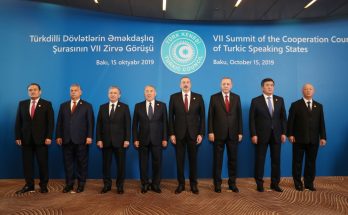
Azerbaijani and Armenian Presidents Ilham Aliyev and Serzh Sargsyan have made it clear that they intend to build on the momentum of their meetings and intensify the peace process, which indeed gives ground for optimism in 2014, OSCE Chairperson-in-Office Personal Representative Andrzej Kasprzyk told Trend. “In the last few weeks I have heard cautiously optimistic assessments from Armenian and Azerbaijani officials,” he said.
“With the permission and assistance of the sides, OSCE mission members have visited the contact line on 17 occasions in 2013,” Kasprzyk added.
“Local commanders, as well as civilian authorities, have raised a number of serious concerns during these visits,” he said. “These concerns include: the risk to life posed to civilians and military personnel, both from ceasefire violations and mine-related incidents; and the debilitating psychological and economic impact on those living close to the contact line.”
“The number of those reported killed or wounded as a result of ceasefire violations in 2013 is less than those in 2012,” Kasprzyk said. “However, the ceasefire remains self-regulated: the risks remain as serious as ever, and those living close to the contact line will continue to suffer hardship until such time as the ceasefire is strengthened.”
“The Minsk Group Co-Chairs and the Personal Representative have mandates to work with the parties to develop confidence-building and other measures,” he said.
“Presidents Aliyev and Sargsyan have called for additional steps to strengthen the ceasefire and carry out confidence-building measures in all fields in order to create a better atmosphere for the negotiations,” he said.
“One of confidence-building measures would be to develop humanitarian contacts among the two sides, intelligentsia, academic and public circles,” Kasprzyk said.
Moreover, Kasprzyk’s team has been helping to elaborate a mechanism for investigating potential incidents.
“Implementation of some confidence-building measures is more complicated than that of others,” he said. “But these measures can and – sooner or later – will help reduce tensions on the contact line and the international border; reduce the risks faced by military personnel and those living close to the front lines; and create a better atmosphere for the negotiations, allowing Presidents Aliyev and Sargsyan to make demonstrable progress towards a lasting political settlement.”
The conflict between the two South Caucasus countries began in 1988 when Armenia made territorial claims against Azerbaijan. Armenian armed forces have occupied 20 per cent of Azerbaijan since 1992, including the Nagorno-Karabakh region and seven surrounding districts.
Azerbaijan and Armenia signed a ceasefire agreement in 1994. The co-chairs of the OSCE Minsk Group, Russia, France and the U.S. are currently holding peace negotiations.
Armenia has not yet implemented the U.N. Security Council’s four resolutions on the liberation of the Nagorno-Karabakh and the surrounding regions. /Trend/




